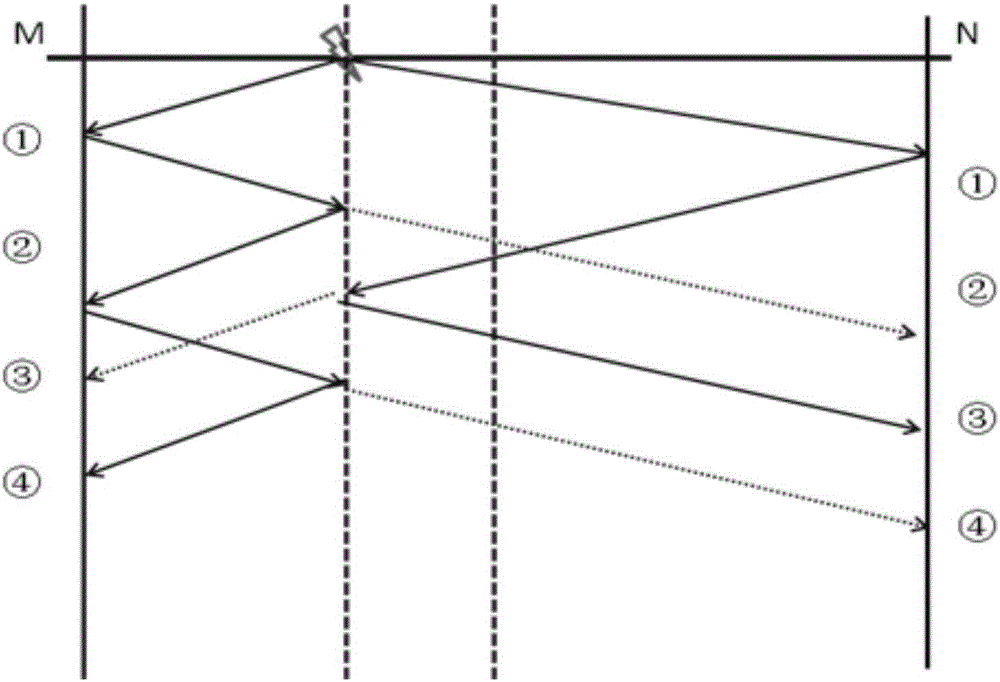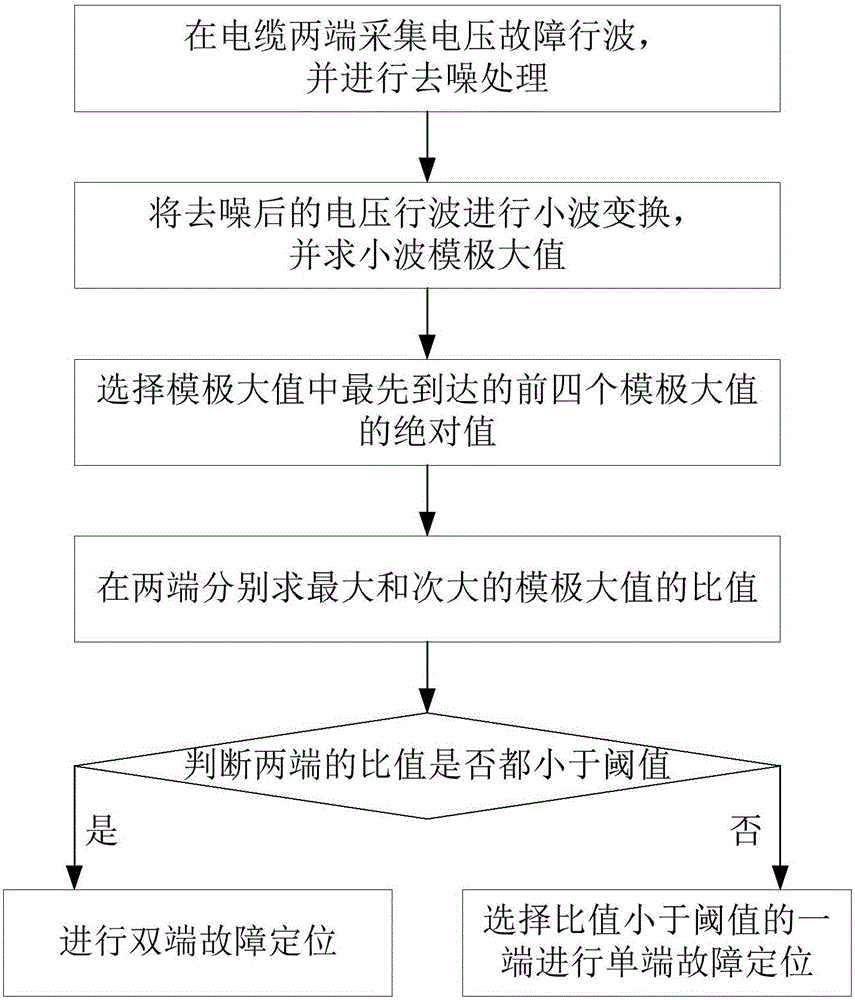Cable low-resistance fault positioning method using single-end and double-end combination
A fault locating and cable technology, applied in the fault location, detecting faults according to conductor types, measuring electricity and other directions, can solve the problems of inaccurate fault locating, aliasing of fault waves, and difficulty in automatic identification, so as to achieve accurate fault locating and avoidance. Wave head aliasing, to achieve the effect of automatic identification
- Summary
- Abstract
- Description
- Claims
- Application Information
AI Technical Summary
Problems solved by technology
Method used
Image
Examples
Embodiment 1
[0077] In Embodiment 1, the times and amplitudes of the four traveling waves first arriving at the M terminal and the N terminal are recorded in Table 1 and Table 2, respectively.
[0078]
[0079] Table 1
[0080] Table 1 is figure 1 The arrival time and modulus maximum value of the M terminal in the time distance diagram shown when the grounding resistance is 10Ω.
[0081]
[0082] Table 2
[0083] Table 2 is figure 1 The arrival time and modulus maximum value of the N terminal in the time distance diagram shown when the grounding resistance is 10Ω.
Embodiment 2
[0084] In the second embodiment, the times and amplitudes of the first four traveling waves arriving at the M terminal and the N terminal are recorded in Table 3 and Table 4, respectively.
[0085]
[0086] table 3
[0087] Table 3 is figure 2 The arrival time and modulus maximum value of the M terminal in the time distance diagram shown when the grounding resistance is 10Ω.
[0088]
[0089] Table 4
[0090] Table 4 is figure 2 The arrival time and modulus maximum value of the N terminal in the time distance diagram shown when the grounding resistance is 10Ω.
[0091] Step 5. For the near-end and the far-end, respectively select the two with the largest absolute values among the four modulus maxima and record them as:
[0092] A m1 (maximum of near-end modulus maxima), A m2 (the proximal modulus maximum value is the next largest),
[0093] A n1 (maximum value of remote modulus), A n2 (the second largest value of the remote modulus maximum);
[0094] Find t...
Embodiment 2
[0097] For the second embodiment, the M terminal is 4763 / 2241=2.1254>5, so the second embodiment uses the single-ended method for fault location.
[0098] In the above step 5, if the ratios of the near-end and the far-end are both less than or equal to the threshold, then the two modulus maxima correspond to the arrival times of the initial fault wave and the reflected wave at the fault point required by the corresponding end.
[0099] In Embodiment 1, the ratios of the modulus maxima at the M-terminal and the N-terminal are both smaller than the threshold, the sampling points corresponding to the two modulus maxima at the M-terminal are 2077 and 2232, and the sampling points corresponding to the two modulus maxima at the N-terminal The sampling points are 2123 and 2370. According to the sampling interval, the time difference between the fault initial wave and the first fault reflection wave can be obtained.
[0100] In the above step 5, if the ratio between the near end and ...
PUM
 Login to View More
Login to View More Abstract
Description
Claims
Application Information
 Login to View More
Login to View More - R&D
- Intellectual Property
- Life Sciences
- Materials
- Tech Scout
- Unparalleled Data Quality
- Higher Quality Content
- 60% Fewer Hallucinations
Browse by: Latest US Patents, China's latest patents, Technical Efficacy Thesaurus, Application Domain, Technology Topic, Popular Technical Reports.
© 2025 PatSnap. All rights reserved.Legal|Privacy policy|Modern Slavery Act Transparency Statement|Sitemap|About US| Contact US: help@patsnap.com



